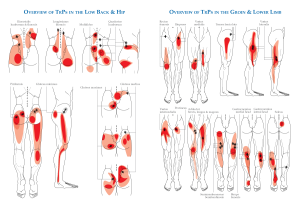Selective Nerve Root Block Injections For Spine Pain

Category: | Author:
If you’ve been dealing with spinal nerve pain for some time and have found it difficult to effectively treat the problem with home-based conservative methods, but you also want to avoid surgery if possible, you may benefit from a spinal injection. There are a few different injections that could help provide relief, but one of the more common types is known as the selective nerve root block (SNRB). In today’s blog, we explain how a selective nerve root block may be able to help you find relief from your nerve-related spine pain.
How An SNRB Works
An SNRB can be administered during the diagnostic or treatment phases of care. During the diagnostic stage, an injection that provides relief can help to pinpoint the specific nerve that is damaged. In the treatment phase, an SNRB can deliver an anesthetic to a targeted area in order to calm symptoms and make it easier for patients to pursue other treatments like exercise or physical therapy.
During an SNRB injection, your spine specialist will carefully navigate a needle into a specific area of the spine before injecting medication directly into the space. The medication is usually an anesthetic or an anesthesia with a steroid, and it is administered near the spinal nerve as it exits the intervertebral foramen. When combined with a steroid, an SNRB can help by:
- Inhibiting certain enzymes that can serve to irritate spinal nerves.
- Block certain nerve fibers that are transmitting pain signals to the brain.
- Decrease the amount of blood flow to the nerve, which helps to decrease pain transmission.
Selective nerve root blocks can be an effective form of treatment, but they aren’t a great stand-alone option for long-term back pain relief. Studies have found that 57 percent of patients who received one SNRB injection in the cervical spine reported significant improvement in pain and function at six months post-injection. 46 percent of patients who received one SNRB injection to treat nerve pain in the lumbar spine said the same. So in all, about half of the patients who receive one SNRB injection can expect significant relief 6-12 months down the road. Certainly not bad numbers, but there’s no guarantee it will work.
If you want to increase your likelihood of noticing symptom improvement from an SNRB injection, you’ll want to pair it with other healthy choices and conservative treatments. The short-term pain relief should make it easier to pursue active treatments like exercise and physical therapy that can help strengthen your spine and take pressure off the nerve, and you’ll also want to make some small daily adjustments like improving your diet and your posture. Taken in combination with one another, you can make it more likely that your nerve pain will resolve following an SNRB injection.
To learn more about spinal injections and how they may be able to help you find relief from your back pain, reach out to Dr. Sinicropi and the team at The Midwest Spine & Brain Institute today at (651) 430-3800.
Related




